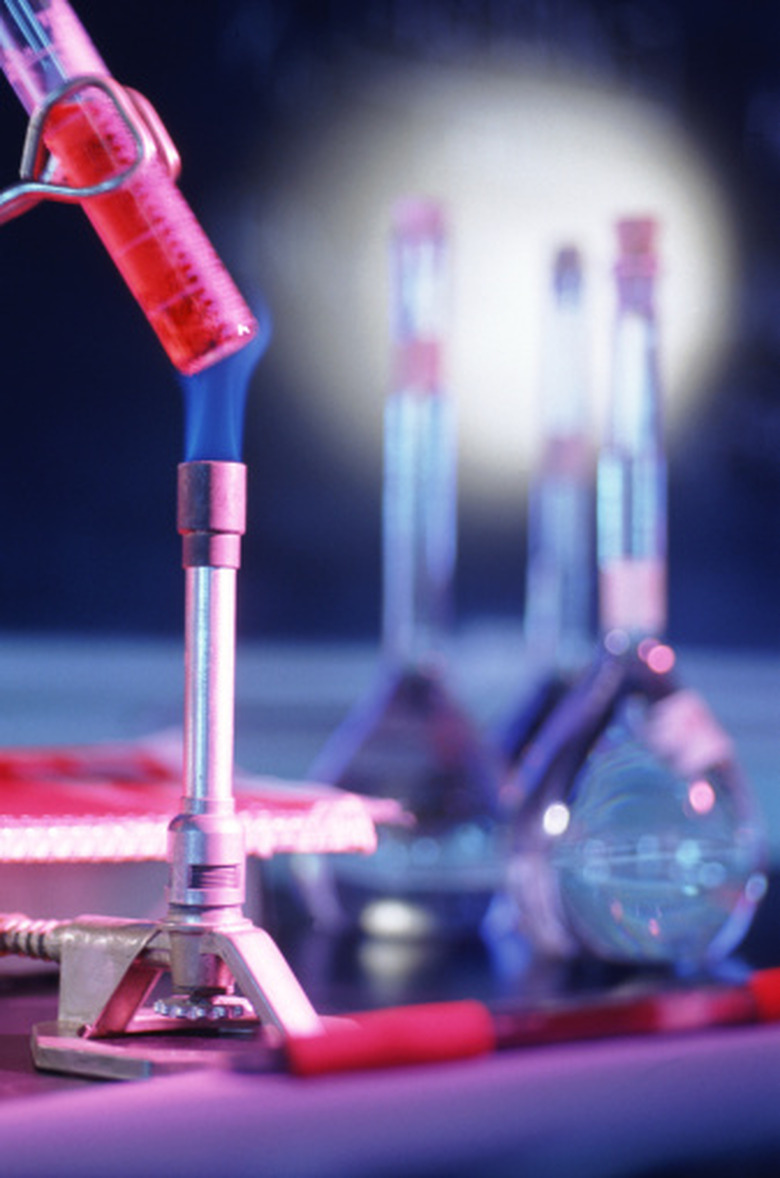What Is The Difference Between Reactants & Products In A Chemical Reaction?
Chemical reactions are complex processes that involve chaotic collisions of molecules where bonds between atoms are broken and reformed in new ways. Despite this complexity, most reactions can be understood and written out in basic steps showing an orderly process. By convention, scientists place the chemicals involved in a reaction into two basic categories: reactants and products. This helps to explain what is happening during a reaction, although sometimes the reality can be more complicated.
Chemical Reactions
Chemical Reactions
A chemical reaction is mostly about electrons, those very tiny, negatively charged particles that orbit around the outside of all atoms. That's because electrons form the bonds that hold different atoms together into molecules. Electrons also jump from some atoms to other atoms to form charged particles known as ions that cling to each other to form other types of molecules. In a chemical reaction, the changes between reactants and products is how their electrons have been rearranged to form new connections between atoms.
Reactants
Reactants
The reactants, as the name implies, are the chemical elements or compounds that react together, and are shown on the left hand side of the reaction equation. They are normally changed or broken down during the reaction and so are used up as the reaction progresses. Although it sounds obvious, reactants are often reactive chemicals, meaning that they are made of arrangements of atoms that readily break apart to form new compounds. In the reaction between zinc (Zn) and sulfuric acid (H2SO4), these two chemicals are the reactants and appear in the reaction equation as Zn + H2SO4 –>.
Products
Products
The products of a reaction are the chemicals that are formed from the break down and rearrangement of the reactants. They are shown on the right hand side of the reaction equation. They are generally more stable molecules than the reactants. In the case of the reaction between Zn and H2SO4, the products are zinc sulfate and hydrogen gas. The entire reaction equation is written as Zn + H2SO4 –> ZnSO4 + H2.
Reaction Equilibrium
Reaction Equilibrium
In the case of some chemical reactions, the distinction between reactants and products is not as clear cut. This is because these reactions exist as an equilibrium, meaning there is a back-and-forth pathway between reactants and products. The result is that some reactants combine to produce products, but these chemicals can then react to reform the reactants. Once this type of reaction reaches equilibrium, both reactants and products coexist, constantly inter-converting between the two states.
Cite This Article
MLA
Judge, Michael. "What Is The Difference Between Reactants & Products In A Chemical Reaction?" sciencing.com, https://www.sciencing.com/difference-reactants-products-chemical-reaction-8573400/. 13 March 2018.
APA
Judge, Michael. (2018, March 13). What Is The Difference Between Reactants & Products In A Chemical Reaction?. sciencing.com. Retrieved from https://www.sciencing.com/difference-reactants-products-chemical-reaction-8573400/
Chicago
Judge, Michael. What Is The Difference Between Reactants & Products In A Chemical Reaction? last modified August 30, 2022. https://www.sciencing.com/difference-reactants-products-chemical-reaction-8573400/
